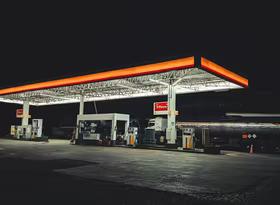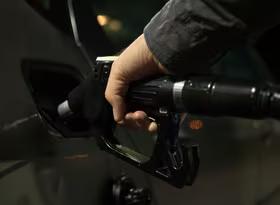
Smaller rental fleet persists, but is consistent with the level of tourists
Demand for rental cars dried up over the COVID-19 pandemic, as tourist arrivals plummeted. With reduced demand, there was a swift decline in the size of the rental car fleet. Registrations of new rental cars have generally been trending upwards since 2021, but they still remain below pre-pandemic levels, particularly in the months that historically recorded very strong registrations. A smaller fleet and generally weaker registrations seem to point to a lack of supply of rental cars, but once the lower level of foreign tourist arrivals is accounted for, it becomes clear that the smaller rental fleet is broadly consistent with the current number of tourist arrivals.
Rental car fleet still below typical pre-pandemic level
Tight border restrictions because of the COVID-19 pandemic limited foreign tourist arrivals for much of 2020 and 2021, which substantially reduced demand for rental cars. The rental car fleet declined swiftly, as rentals no longer needed were repurposed or sold. Since early 2022, the rental fleet has started to bounce back, but it remains well below the typical size before the COVID-19 pandemic (see Chart 1).
As shown in Chart 1, the size of the rental fleet fluctuates over the course of each year, peaking in the summer months. The current rental fleet is now roughly equivalent to an off-peak month during a pre-pandemic year, but it remains just over 12,000 cars smaller than the pre-pandemic average for a March quarter. Nevertheless, the rental fleet is steadily growing and has been doing so for the last 12 months.
New rental car registrations trending up, but lower than pre-pandemic levels in peak months
The size of the rental fleet is increasing due to higher registrations of new rental cars. Although rental registrations are generally below pre-pandemic levels, they have exceeded the typical pre-pandemic level at times, particularly in historically lower months (see Chart 2). For example, in March 2023, new rental registrations were almost 10 times higher than the average of rental registrations across March 2017, 2018, and 2019, with March historically being a month of low rental registrations.
Chart 2 highlights that registrations of new rentals are trending upwards, but remain well below typical pre-pandemic levels, limiting the speed at which the rental fleet recovers to its pre-pandemic size.
Rental fleet approaching a level which likely matches demand
At first glance, a more constrained supply of new cars could be driving the limited number of rental registrations, as new car production has not fully recovered from pandemic disruptions, and supply chain bottlenecks linger.
But alongside the limited new car supply’s contribution to the relatively slow growth of rental registrations, the level of rental car demand should also be considered. Once we adjust the size of the rental fleet for the level of foreign tourist arrivals, it is clear that the fleet is approaching the size historically required to support this level of demand. Chart 3 shows that, over the last decade, there was approximately one rental car for every 20-25 foreign tourist arrivals in each quarter, and the fleet has rebounded to the lower end of this range in March 2023.
The tourism sector’s recovery has plateaued slightly earlier than we initially expected, with the pent-up demand to travel starting to dissipate, and more constrained household budgets globally limiting discretionary spending. However, we still expect visitor arrivals to continue gradually rising, meaning that the rental fleet will have to continue expanding to meet the additional demand from higher tourist arrivals.
Recent months have shown a shift in the source of tourist arrivals, with arrivals from China notably weaker than pre-pandemic levels and recovering more slowly, and arrivals from Europe and North America recovering faster. The changing make-up of foreign tourist arrivals could alter the historical relationship between the rental fleet and arrivals, as arrivals from different parts of the world might use rental cars to different extents while in New Zealand.
Policy changes could affect rental registrations
The government recently announced substantial changes to the Clean Car Discount scheme, which effectively excludes hybrids from attracting a rebate under the scheme and lowers the maximum rebate, among other things. In short, the scope of the Clean Car Discount has been narrowed to only favour vehicles which are even more fuel-efficient than under the previous policy settings. These changes are designed to fill the $98m funding gap the scheme has generated so far.
The changes to the Clean Car Discount will change the future make-up of the rental car fleet, but they could also limit rental registrations over the next 6-12 months. Registrations of rentals could be softer as some orders for cars that previously attracted a rebate under the scheme, but no longer do, will be cancelled in favour of cars that still attract a rebate. This switch could delay time to registration, possibly by up to 6-12 months, meaning registrations ease in the intervening period.


















